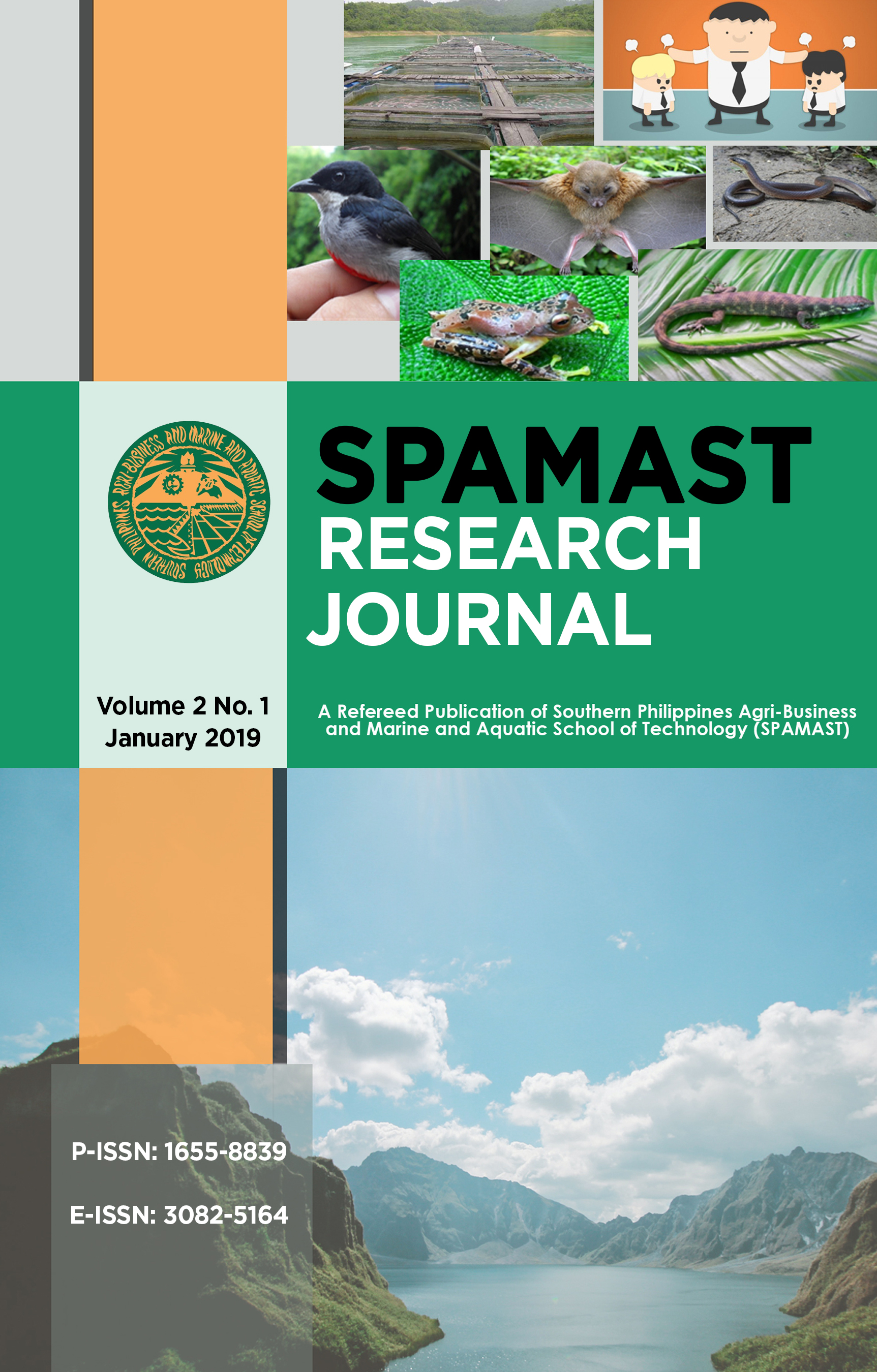Effects Of Cage Aquaculture to The Physicochemical Status of Mariculture Park in Tubalan Cove
DOI:
https://doi.org/10.64656/spamastrj.v2i1.8Keywords:
Cage aquaculture, physico-chemical status, mari-culture, Tubalan coveAbstract
This study was conducted in Tubalan Cove to determine the levels of dissolved oxygen (DO), biochemical oxygen demand (BOD), phosphates, nitrates, pH, salinity, temperature, and transparency; to assess the volume of fish and shellfish caught; and to evaluate the awareness level of coastal residents regarding the preservation efforts in Tubalan Cove. Turbidity was significantly higher in Alibungog than in Tubalan and Udalo. Temperature, salinity, pH, and dissolved oxygen (DO) vary insignificantly among the three sampling stations. Water parameters with high levels included COD, phosphates, and Ammonium-Nitrogen (N), while parameters with normal levels were pH, dissolved oxygen (DO), nitrate, nitrite, salinity, and hydrogen sulfide. The mean age of the respondents was 39 years, and the majority had a high school education or less. The most frequently caught fish was Nokos (squid). A typical day involved 4 hours of fishing, 4 days a week. The gill net was a common type of fishing gear. Tuway shells were frequently caught during gleaning, which involved spending 3 hours a day, 2 days a week, gleaning. Tagad was a common type of gleaning gear. Moreover, the participants revealed that they caught more fish and shells before the establishment of cage aquaculture in the area. Respondents were moderately aware of dynamite and poison fishing, as well as the use of fine mesh nets, but were less aware of water quality monitoring. Tubalan Cove is still at a safe level.
Downloads
References
Abowei, J. F. N., (2010). Salinity, Dissolved Oxygen, pH and surface water temperature conditions in Nkoro River, Niger Delta, Nigeria. Advance journal of food science and technology, 2(1), pp 16-21.
Alikunhi, K. H., Ramachandra, V., & Chaudhuri, H. (1952). Mortality of carp fry under super saturation of dissolved oxygen in water. Proceedings of the National Institute of Sciences of India, 17 (4), pp 261-264
Andersen, J. M. (1976). An ignition method for determining phosphorus in lake sediments. Water Reserves.
Downloads
Published
Issue
Section
License
Copyright (c) 2019 Dario R. Morastil (Author)

This work is licensed under a Creative Commons Attribution-NonCommercial 4.0 International License.






